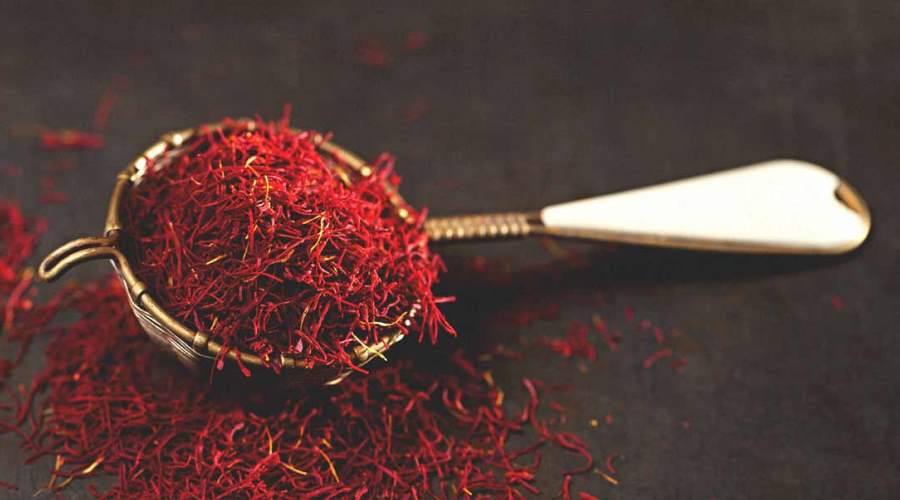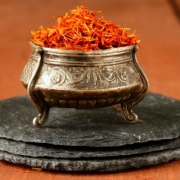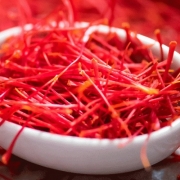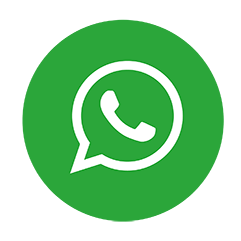Saffron, Phytochemical and Medicinal Properties
Saffron is a perennial spicy herb and well known as Red Gold in producer countries. This plant is the most expensive cultivated herb in the world. The origin of the word saffron is the French term Safran, which was derived from the Latin word safranum and comes from the Arabic word as far that means “yellow”. But this word is different from the ancient Persian word as Karkum which was used by the people living around Zagros Mountains.
It has been documented that saffron was used as a food or spicy plant product for culinary purposes in Achamenian Imperial court.

Saffron
The underground parts of the plant, corms or bulbs, can be used to produce new plant as this plant has no seed propagation. The outstanding feature of the colored flowers of saffron is three stigmas (25-30 mm long), drooped over the petals. The flower has also three yellow stamens, which do not contain the active compounds and usually are not collected. Each bulb produces one to seven flowers. It seems that the cultivated species has originated as a natural hybrid so that it has been selected for its long stigmas and maintained ever since.
The flower of C. sativa is a light purple, but it is the thread-like reddish-colored stigma of the flower that is valued both as a spice and as a natural colorant. It takes about 36,000 flowers to yield just 1 pound of stigmas. Over 200,000 dried stigmas (obtained from about 70,000 flowers) yield 500 g of pure saffron (not contaminated with safflower) which cost as much as $30 per ounce in the American market.
Saffron as a medicinal food plant material must follow the international standards. The important chemical characteristics of dried saffron on the basis of ISO 3632-1 are indicated below.

Saffron Spec
Ferdowsi Trading Center is the first university based trading company in Iran, providing you with best quality saffron directly from farms of Khorasan province, Iran. You are welcomed to check our Saffron page and contact us in case you have an inquiry. Hope to see you soon!
 لینک کوتاه این صفحه: ftce.ir/2oWj1
لینک کوتاه این صفحه: ftce.ir/2oWj1









Leave a Reply